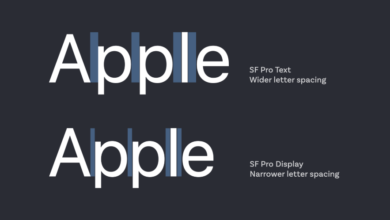Best Online Earning Platforms of 2024: A Comprehensive Guide

As technology continues to advance and remote opportunities flourish, earning money online has become increasingly accessible. Whether you’re a freelancer, entrepreneur, educator, or simply looking to supplement your income, there are numerous platforms tailored to your needs. Here’s a detailed look at the best online earning platforms of 2024, their features, and how you can maximize your potential earnings.
Upwork
Upwork is one of the largest freelancing platforms, connecting businesses with skilled professionals from all over the world. It covers a wide range of industries, including writing, programming, design, marketing, and more. Key features of Upwork include a secure platform with an escrow system to ensure payments, access to projects ranging from one-time gigs to long-term contracts, categories for all skill levels from entry-level to expert, and tools for collaboration, time tracking, and milestone management. To earn on Upwork, create a strong profile highlighting your skills and experience, bid on projects that match your expertise, and deliver high-quality work to build a strong reputation and earn repeat clients. Pros of Upwork include diverse project opportunities, a global client base, and a secure payment system, while cons include service fees (5%–20%) deducted from earnings and a highly competitive environment.
Fiverr
Fiverr allows freelancers to offer services starting at $5. The platform is ideal for professionals who want to package their services into “gigs,” making it easy for clients to choose and purchase. Key features include pre-set packages (Basic, Standard, Premium) for different price points, categories like graphic design, writing, digital marketing, and more, and opportunities to showcase portfolios and client reviews. To earn on Fiverr, list your services with clear descriptions, pricing, and delivery times, optimize your gigs with relevant keywords to appear in searches, and upsell services to maximize earnings. Pros of Fiverr include a low barrier to entry, the freedom to set prices, and the flexibility to work on your schedule, while cons include high competition in popular categories and a 20% commission taken by the platform.
Amazon
Beyond its e-commerce dominance, Amazon provides earning opportunities through its affiliate program, selling products on its platform, and even self-publishing through Kindle Direct Publishing (KDP). Key features include affiliate marketing, which allows you to earn commissions by promoting Amazon products, Amazon FBA (Fulfillment by Amazon) to help entrepreneurs sell products efficiently, and self-publishing options for authors via Kindle. To earn on Amazon, sign up for the Amazon Affiliate program and promote products via blogs, YouTube, or social media, source or create products to sell through Amazon, and write and publish e-books on Kindle for passive income. Pros include an established, trusted platform with a massive user base and multiple income streams available, while cons include high competition among sellers and fees associated with FBA services.
YouTube
YouTube remains a powerful platform for creators to share video content and earn through monetization. From tutorials to vlogs, there’s room for creativity in any niche. Key features include monetization through ads, sponsorships, and memberships, analytics to track performance and audience demographics, and integration with platforms like Patreon for additional income. To earn on YouTube, create a YouTube channel and post engaging, high-quality content regularly, join the YouTube Partner Program to earn ad revenue, and diversify income through sponsored content, affiliate marketing, and merchandise. Pros include high earning potential with viral content, the opportunity to build a personal brand, and passive income through older videos, while cons include the need for consistent effort to grow an audience and fluctuating ad revenue based on views and engagement.
Etsy
Etsy is a platform for creative entrepreneurs to sell handmade goods, vintage items, and craft supplies. It’s perfect for those who enjoy crafting and want to turn their hobby into a business. Key features include a niche audience for unique and personalized items, tools for branding, marketing, and customer interaction, and opportunities for global sales. To earn on Etsy, list handmade or vintage items in your shop, use SEO-friendly titles and descriptions to attract buyers, and market your store through social media and other channels. Pros include a supportive community of artisans and sellers, the opportunity to sell globally, and tools for branding and promoting your shop, while cons include transaction and listing fees that can add up and a niche market that may limit scalability.
Shopify
Shopify is an e-commerce platform that allows individuals and businesses to create their own online stores. It’s ideal for those who want full control over their brand and sales. Key features include customizable online storefronts, integrated payment systems and shipping tools, and support for dropshipping and print-on-demand businesses. To earn on Shopify, sell physical or digital products through your Shopify store, leverage dropshipping or print-on-demand to minimize upfront costs, and use marketing tools like email campaigns and social media ads to drive traffic. Pros include full control over branding and pricing, a scalable business model, and tools for marketing and analytics, while cons include monthly subscription fees and the need for effort to drive traffic to your store.
Udemy
Udemy is an online learning platform where educators and experts can create and sell courses on various subjects. It’s ideal for those who enjoy teaching and have expertise in a specific field. Key features include easy course creation tools, including video hosting and editing, a global audience of learners, and a revenue-sharing model with promotional opportunities. To earn on Udemy, create and publish courses, offer discounts during promotions to attract students, and provide consistent updates and support to maintain positive reviews. Pros include passive income from course sales, access to Udemy’s marketing resources, and the opportunity to teach topics you’re passionate about, while cons include a revenue-sharing model that reduces earnings per sale and high competition in popular course categories.
Swagbucks
Swagbucks is a rewards platform that allows users to earn points (Swagbucks or SB) by completing various online activities, such as taking surveys, watching videos, and shopping online. Key features include multiple earning opportunities, the ability to redeem points for cash or gift cards, and daily bonuses and promotions. To earn on Swagbucks, sign up and start completing activities, refer friends to earn additional points, and take advantage of high-reward offers. Pros include easy accessibility, no specific skills required, and flexibility, while cons include limited earning potential compared to other platforms and time-consuming tasks.
Freelancer.com
Similar to Upwork, Freelancer.com connects freelancers with clients offering projects in areas like writing, design, and programming. Key features include a bidding system for projects, secure payment milestones, and options for short-term and long-term work. To earn on Freelancer.com, build a comprehensive profile showcasing your expertise, bid on projects that align with your skills, and deliver exceptional work to secure repeat clients. Pros include diverse opportunities across industries, a global client base, and a secure payment system, while cons include high service fees and a competitive bidding process.
Meesho
Meesho is a reselling platform that enables users to sell products through social networks like WhatsApp and Facebook. It’s particularly popular in regions like India for starting an online business with minimal investment. Key features include the ability to resell products without owning inventory, tools for sharing product catalogs with potential customers, and a low barrier to entry. To earn on Meesho, sign up and browse Meesho’s product catalog, share items with your network and earn a commission on each sale, and upsell or bundle products to maximize earnings. Pros include minimal investment required, flexible working hours, and a wide range of products to choose from, while cons include earnings that depend on network reach and sales skills and limited scalability for some users.
Conclusion
In 2024, there’s no shortage of online platforms to help you earn income, whether you’re looking for freelance gigs, teaching opportunities, e-commerce, or creative outlets. Choosing the right platform depends on your skills, interests, and goals. Platforms like Upwork and Fiverr are excellent for freelancers, while Shopify and Etsy cater to entrepreneurs. For those looking for passive income, options like Udemy, YouTube, and Amazon offer great potential. Regardless of your choice, success requires dedication, consistency, and leveraging the unique features of your chosen platform.




